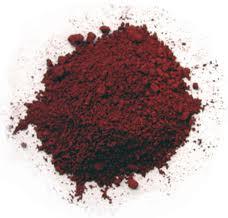The red mud is hazardous primarily because of its alkalinity. The pH level is generally up to 13 or higher in some cases, due to the presence of alkaline sodium compounds, such as sodium carbonate and sodium hydroxide. The red mud can cause chemical burns when in contact with the skin. The water and soil ecosystem are mostly endangered due to the alkalinity.
The particle size of the red mud poses an other hazard. The particle size of the red mud averages 2 to 100 μm. It is therefore on average in the silt to fine sand textural class. The particles settle as wet red mud slurry. The wet slurry needs several years to dry. Once it is dry it is blown by wind as fine dust. The wind can transport the dust particles at several kms distance. Inhallation of the particles may severely affect the lungs.
Bauxite residue composition varies by region (depending on the qualities of the ore), but typically contains the following components:
Fe2O3 | 30−60% |
Al2O3 | 10−20% |
SiO2 | 3−50% |
Na2O | 2−10% |
CaO | 2−8% |
TiO2 | 0−25% |
The red mud may contain toxic metals too: toxic metal concentration in most of the red mud does not reach the risk threshold level.
The general data sheet of the red mud and typically of the red mud from Almásfüzitő can be reached via the ENFO database (www.enfo.hu)
The results of the laboratory analysis performed on the red mud from the spill can be viewed on the webpage of the Hungarian Academy of Science or at the Greenpeace webpage.
The attached document provides information about the chemical composition of the red mud
A pdf dokumentum forrása:
http://www.asiapacificpartnership.org/english/pr_aluminium.aspx#Aluminium_Project_3
